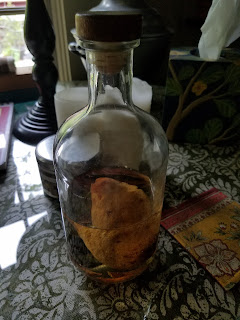The early blooming apricots, are susceptible to late frost or a lack of pollinators. With the prolonged cool weather throughout April, it was the very end of the month before the flowers opened. The last frost was a week past and the pollinators were out and about. Hopefully there will be plenty of fruit to share with the squirrels, birds etc.
The nectarine is usually the next to flower, being self fertile, only one tree is needed to ensure fruit.
To have any chance of a cherry harvest, netting the trees to prevent bird predation is essential.
For cross pollination, we have two varieties
The peach, this one given to us by a neighbour as a seedling he germinated from a pit, always flowers reliably and sets fruit.
After waiting five years, this is the first time our Damson plum tree has flowered and only half a dozen or so at that. Not enough to make a whole lot of jam, but there is always next year.
Our Asian pear is only four years old and this is the second year of flowering. The fruits have to be thinned to get reliably good sized fruit.
The Bartlett pear will quickly grow to a formidable size and the fruit unreachable, unless pruned regularly.
Best to keep it confined to a bottle.
The 14 espaliered apples which surround the enclosed fruit garden were bought as whips and trained along the fence. A time consuming, but worthwhile endeavour.
Each espalier is a different variety of apple, resulting in a varied display of flowers and fruits.
Inside the enclosed fruit garden, we cultivate black currants,
red currants
and gooseberries,
along with blueberries, which are presently flowering.
Raspberries
and blackberries complete the cycle.





















No comments:
Post a Comment